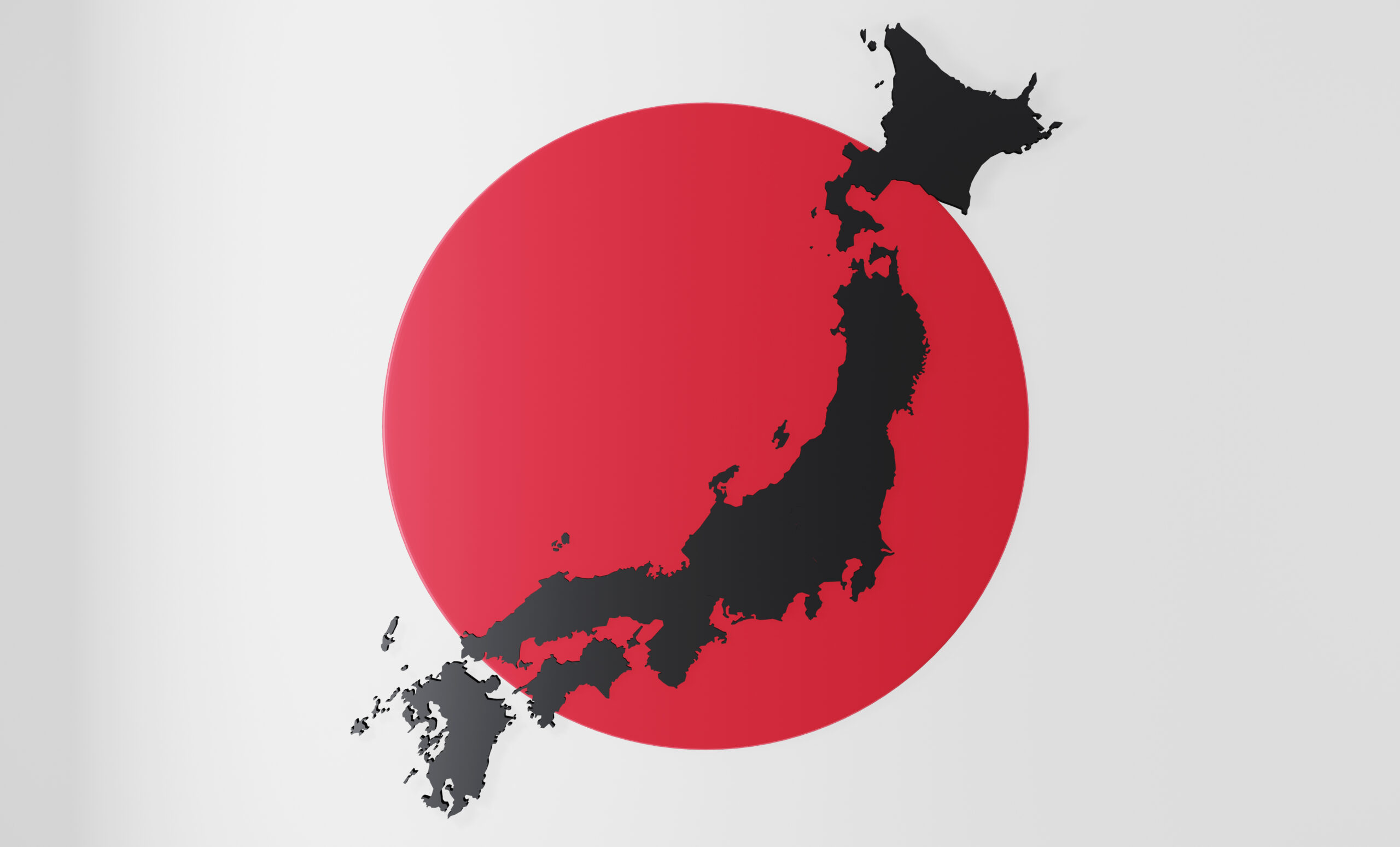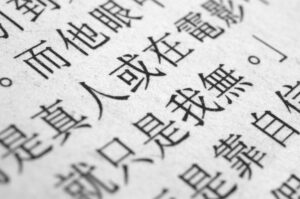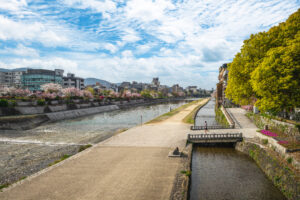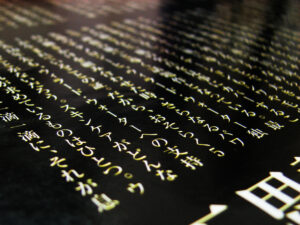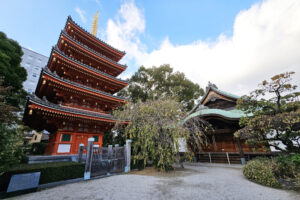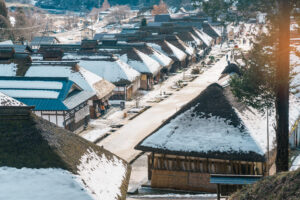In the tapestry of global history, few nations embody the dramatic intertwining of cultural richness and tumultuous conflict quite like Japan. From its ancient origins to its current position on the world stage, Japan’s journey through time is a narrative filled with epoch-making events, influential philosophies, and transformative leaders. This article embarks on a chronological exploration of Japan’s epic saga, tracing millennia of cultural evolution and conflict resolution that have shaped this unique island nation.
Dawn of the Archipelago: Japan’s Ancient Origins
Japan’s story begins thousands of years ago, with its earliest known society forming around the Jomon Period (circa 14,000-300 BCE). During this time, the inhabitants of the Japanese archipelago lived as hunter-gatherers, with a notable culture that produced cord-marked pottery, from which the period draws its name. The Yayoi period followed, introducing rice agriculture from Korea and China, marking a significant shift towards sedentary life and social complexity. This era saw the emergence of distinct clan territories and the foundation of Japan’s intricate relationship with both the Korean peninsula and the Chinese mainland, through trade and cultural exchange. The Kofun period ensued, named after the large tomb mounds created for the elite, symbolizing a centralization of power and the emergence of a ruling class. It was during this time that the concept of a unified Japanese identity began to crystallize, setting the stage for the nation’s historical journey.
Crafting a Nation: The Rise of Yamato
The establishment of the Yamato state in the Kofun period (around the 3rd to 7th centuries) marked the dawn of classical Japan. This period was characterized by the emergence of a powerful clan in the Nara region, which gradually exerted control over neighboring territories through both diplomatic and military means. The Yamato leaders, claiming divine descent from the sun goddess Amaterasu, utilized religion as a tool for political consolidation, laying the groundwork for the imperial lineage. The introduction of the Chinese writing system, along with Buddhism, further transformed Japanese society, providing it with administrative tools and a spiritual framework that would deeply influence its subsequent historical trajectory.
Buddhism and Shinto: Spiritual Fusion
The introduction of Buddhism in the 6th century marked a turning point in Japanese spiritual life. It did not replace the indigenous Shinto religion but rather merged with it in a syncretic fusion that would characterize Japanese religious sentiment. Shinto, with its emphasis on kami (spirits) and natural worship, coexisted harmoniously with Buddhism’s philosophical depth and ritual complexity. This period was marked by the construction of significant Buddhist temples, such as Todai-ji in Nara, and the proliferation of Buddhist art and scholarship. Meanwhile, Shinto maintained its presence through rituals and festivals, contributing to a rich tapestry of Japanese spirituality that emphasized harmony and respect for both nature and ancestors.
Samurai Spirit: The Age of the Warrior
The Heian period (794-1185) set the stage for the rise of the samurai, a warrior class whose ethos would come to dominate Japanese society. As land disputes became more frequent, local aristocrats hired these armed retainers for protection, setting the foundation for a feudal system. The samurai’s importance grew further during the Kamakura period, following the establishment of the first shogunate, or military government, in 1185. This era inaugurated centuries of samurai dominance, where loyalty, honor, and martial prowess were the highest virtues. The tales of the Genpei War, the establishment of the Bushido code, and the creation of the iconic samurai sword highlighted this period’s lasting impact on Japanese culture.
Feudal Factions: The Sengoku Jidai Unfolds
The Sengoku Jidai, or "Warring States" period (1467-1603), was a time of incessant conflict and social upheaval. As the power of the central government waned, regional lords, or daimyo, vied for control in a fragmented nation. This era saw the rise of famous warlords like Oda Nobunaga, Toyotomi Hideyoshi, and Tokugawa Ieyasu, each contributing to the eventual unification of Japan through strategic alliances and military conquest. The widespread use of gunpowder, introduced by the Portuguese, transformed warfare and accelerated the consolidation of power. Amidst the chaos, arts such as the tea ceremony and ink painting flourished, reflecting a culture that found beauty and order in the midst of war.
Unification Under the Sword: The Tokugawa Shogunate
The Tokugawa Shogunate (1603-1868) ushered in an era of peace and stability known as the Edo period. Following the decisive Battle of Sekigahara in 1600, Tokugawa Ieyasu emerged victorious, establishing a military government that would rule Japan for over 250 years. The shogunate implemented policies that isolated Japan from foreign influence and enforced social order through a rigid class system. Despite the isolation, the Edo period was a time of economic growth, urbanization, and cultural blossoming. Kabuki theater, ukiyo-e woodblock prints, and the development of a vibrant popular culture in cities like Edo (modern-day Tokyo) were hallmarks of this era. Meanwhile, the strict social order sowed the seeds for future discontent and transformation.
Isolation to Open Doors: The Meiji Restoration
The arrival of Commodore Matthew Perry’s "Black Ships" in 1853 forced Japan to confront its isolation. The subsequent signing of unequal treaties with Western powers sparked a national crisis, leading to the fall of the Tokugawa Shogunate and the restoration of imperial rule in 1868. The Meiji Restoration initiated a period of rapid modernization and westernization, as Japan sought to protect its sovereignty by adopting the military, technological, and administrative practices of the Western powers. This era witnessed the abolition of the samurai class, the establishment of a constitutional monarchy, and the industrialization of the economy, setting Japan on a path towards becoming a major world power.
Imperial Ambitions: Japan’s Path to World War
Fueled by its newfound strength and facing resource limitations on its islands, Japan embarked on a path of aggressive expansionism in the late 19th and early 20th centuries. Victories in the First Sino-Japanese War (1894-1895) and the Russo-Japanese War (1904-1905) established Japan as a formidable military force, but its imperial ambitions led to increasing tensions with Western powers. The invasion of Manchuria in 1931, followed by further expansion into China, set the stage for Japan’s involvement in World War II. The devastating consequences of the war, culminating in the atomic bombings of Hiroshima and Nagasaki, brought Japan’s imperial aspirations to a tragic end.
Phoenix from the Ashes: Post-War Recovery
In the aftermath of World War II, Japan faced the daunting task of rebuilding a shattered nation. Under the occupation of Allied forces, led by the United States, Japan underwent significant political, economic, and social reforms. The adoption of a new pacifist constitution, the dissolution of zaibatsu (powerful family business conglomerates), and land reform initiatives laid the foundation for Japan’s remarkable post-war recovery. By the 1950s and 1960s, Japan had emerged as a beacon of economic resilience, driven by a booming manufacturing sector and a strong work ethic.
Economic Miracle: Japan’s Rapid Rise
From the ashes of war, Japan soared to unprecedented heights of economic prosperity. The 1960s to the 1980s marked the period of the "Japanese Economic Miracle," a time when Japan became the world’s second-largest economy. This era was characterized by innovative manufacturing techniques, such as the Toyota Production System, and a focus on high-quality exports. The nation’s technological advancements, particularly in the automotive and electronics industries, solidified its status as a global economic powerhouse. However, the burst of the asset price bubble in the early 1990s led to a prolonged period of stagnation, from which Japan is still working to fully recover.
Tradition Meets Innovation: The Heisei Era
The Heisei Era (1989-2019) was marked by Japan’s struggle to navigate economic challenges while maintaining its cultural heritage. Despite the economic stagnation, this period witnessed significant technological advancements and contributions to global culture, including the rise of Japanese pop culture phenomena such as anime and manga. Japan’s ability to blend tradition with innovation was evident in its preservation of historical practices like tea ceremonies and ikebana alongside its leadership in robotics and technology. The era also faced natural and nuclear disasters, most notably the 2011 Great East Japan Earthquake and the subsequent Fukushima Daiichi nuclear disaster, challenging the nation to rebuild and rethink its future.
Looking Forward: Japan in the Reiwa Era
As Japan enters the Reiwa Era, inaugurated by Emperor Naruhito’s ascension to the Chrysanthemum Throne in 2019, it stands at a crossroads of tradition and modernity. Faced with an aging population, a declining birthrate, and the need for environmental sustainability, Japan is striving to balance its rich cultural heritage with the demands of a changing world. Initiatives in technology, renewable energy, and international diplomacy are at the forefront of Japan’s agenda as it seeks to maintain its role as a global leader. Amidst these challenges, the enduring spirit of resilience and innovation that has characterized Japan’s history promises to guide the nation into a future as remarkable as its past.
Japan’s epic journey from an isolated archipelago to a leading modern nation is a narrative of resilience, innovation, and transformation. Through millennia of cultural evolution, conflict, and recovery, Japan has maintained its unique identity while adapting to the demands of an ever-changing world. As we look back on Japan’s rich history, it is clear that the lessons of its past are the keys to understanding its future. In the face of new challenges, Japan’s enduring spirit ensures that its journey will continue to be a beacon of hope and a source of fascination for generations to come.
